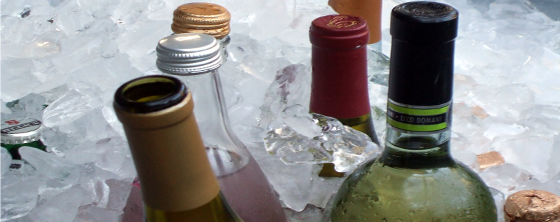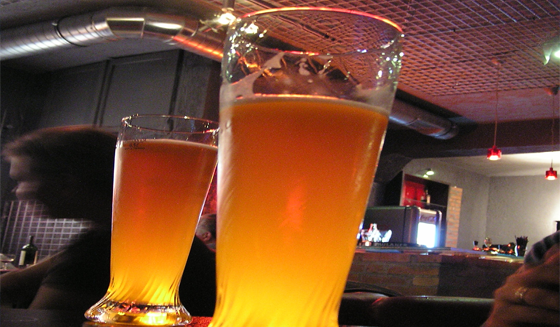Boozology 4
Top 10 Alcohol consuming countries
Top 10 alcohol drinking nations
Have you ever wondered what country drinks the most? Does the acohol consumption of a country relate to how hard they party? Many countries around the world have reputations for consuming alcohol and some cultures even revolve completely around alcohol. There is much more to this list than just measuring by alcohol consumption. Do these countries consume mostly wine? Do they consume beer? We grade a nation of beer drinkers on this list much higher than a nation of wine drinkers. This list is by no means a perfect list, but just our opinions!
Metrics we used to form this list:
1. Czech Republic
We love this country. Czech Republic is the number 1 consumer country of beer in the world. The Czech also have a very rich tradition and culture revolving around alcohol. This country is very deserving of our number one spot on this list.
2. Estonia
Estonia drinks hard liquor. They’re in the top 99% of the world country per capita that consumes spirits. Even though they drink such a high amount of spirits, they also consume a high amount of beer as well. You could argue this country as number on this list and we would listen!
3. South Korea
South Korea shocked us. We knew our Korean friends liked to enjoy a drink or two, but we didn’t know they consumed at the rate the statistics show. South Korea might be the most underrated drinking country on this list. The majority of their spirtis are rice based.
4. Russia
Mother Russia and Vodka go hand and hand. What would be a list of drinking nations without the inclusion of Russia? They have a great drinking culture and loads of bars per capita. I doubt anyone would question their place on this list.
5. Ireland
Coming into this list we thought Ireland would naturally be number one on this list. If we were ranking on drinking culture alone, Ireland would be number one on this list. They’re lack of liquor consumption brings them down a bit, but they show up strong with beer consumption. If we had to drink our days away in one nation, we’d pick Ireland.
6. Ukraine
Ukraine is obviously not Russia, but they share alot of the same drinking culture. So naturally they would wind up near Russia on this list.
7. Germany
Germany is another country we thought would be in the top three on this list. Germany is known for it’s amazing culture revolving around alcohol. I’m sure there isn’t too many people on the planet that hasn’t heard of Oktoberfest or the Beer garden. The downfall on this list for Germany was that the majority of their alcohol consumption was mostly beer.
8. France
Even though France has a reputation for being a wine and cheese crowd, they can throw down the drinks. They might be the highest consumers of wine in the world, and seem to drink it with most meals.
9. Hungary
Hugary consumes alcohol in high amount regardless the type. They consume beer, liquor, and wine in large amounts. They might not be a country that comes right to you when you think drniking nations, but they scored high on our list.
10. Luxembourg
Luxemburg is the acutal top consumer of wine on this list and not France. Luxemburg is know for it’s high dollar lifestyle and culture. This accounts for all the wine being consumed in this country!
Honorable mentions
United Kingdom – Was shocked at the numbers. We thought for sure they would be top 5.
Lativa – Heavy drinkers that could be argued in the top 10.
Italy – Our love of Lemoncello is enough to get them a mention. Sorrento is close to our hearts.
Moldova – During our research we read a lot about Moldova, and they’re worthy of a mention.
United States – Because we live there!
Rest of the world – We love you too!
What say you, world?!? #drinknation
What is Alcohol
What is alcohol?
Depending on your location in the world, your view on alcohol could be very contrasting. Alcohol is banned in certain parts of the world, and glorified in others. Alcohol has a long and storied history of consumption, taboo, crazy stories, regret, and even death. This article will attempt to list out exactly what alcohol is, it’s causes, side effects, and stages of intoxication. When alcohol is referred to consumption for recreation this alcohol is officially known as Ethanol.
Alcohol (Ethanol) Definition: A depressant liquid that is known to cause intoxication and go by many names including Grain Alcohol, Pure Alcohol, Ethyl Alcohol, and drinking Alcohol. Alcohol is known to be very flammable and a mostly colorless liquid. It’s thought to be of the oldest used psychoactive drugs in the world. Alcohol is known to be used in recreational and social drinking. Alcohol is also known to be used as a solvent or even fuel for various machines.
How is Alcohol made?
The Three major ways to make alcohol:
1. Fermentation: A process that usually involves a grain or fruit mixture settling and fermenting over time with yeast. After fermentation a distillation process if follow for spirits and liquors. This fermentation process is the process that’s used in ethanol (drinking alcohol).
2. Chemical modification of fossil fuels: Modifications of oil, natural gas, coal. The process that’s used for Industrial alcohol.
3. Chemical combination of hydrogen and carbon monoxide: This combination is used to create wood or methanol alcohol.
Alcohol Facts
Alcohol Fun Facts
The Culture of Alcohol
Like stated earlier alcohol is glorified in many parts of the world, as well as banned in many parts of the world as well. Alcohol has a very distinct and storied place in many world cultures. The inclusion of alcohol in cultures includes drinking alcohol in several different forms from beer, wine, spirits, and many more. Imagine what the Irish culture would be without alcohol? How would various middle eastern cultures be without the ban of alcohol? These are curious questions that can spark interesting thought.
Side effects of Alcohol
Alcohol Intoxication (Drunk): Alcohol after extended consumption will cause the consumer to become intoxicated – drunk. The more alcohol that is consumed the more intoxicated the consumer will become. Alcohol Consumer body weight, sex, and several other factors are integral to the level of intoxication to consumption ratio.
-
The higher the concentration of alcohol in a drink, the faster the consumer will become intoxicated. This is known as absorption.
-
Carbonated beverages are known to speed up the process of alcohol absorption which leads to faster intoxication.
-
Consuming Food is known to slow down the absorption of alcohol.
-
Once absorption occurs, alcohol enters the consumer’s blood stream and will start to the effects of alcohol on the body. The level of alcohol in the consumer’s blood stream can be measure by their blood alcohol concentration (BAC Level). There are various tools used to measure BAC level, including blood test and breathalyzers.
Alcohol angover and alcohol detoxification:
Alcohol hangovers will cause headaches, upset stomachs and overall not feeling well. Hangovers are caused by the consumer’s body trying to detoxify itself of the alcohol in the body.
After alcohol is absorbed by the bloodstream in can leave the body in three different ways:
A normal human body can detoxify a avg of .5 oz (15 ml) of alcohol in one hour. It would take an average person one hour to get rid of all alcohol in their system from a an average can of beer.
The stages of intoxication (being drunk)
[one_third]
1. Alcohol Euphoria
(BAC = 0.03 to 0.12 percent)
[/one_third]
[one_third]
2. Alcohol Excitement
(BAC = 0.09 to 0.25 percent)
[/one_third]
[one_third_last]
3. Alcohol Confusion
(BAC = 0.18 to 0.30 percent)
[/one_third_last]
[one_third]
4. Alcohol Stupor
(BAC = 0.25 to 0.4 percent)
[/one_third]
[one_third]
5. Alcohol Coma
(BAC = 0.35 to 0.50 percent)
[/one_third]
[one_third_last]
6. Death
(BAC more than 0.50 percent)
[/one_third_last]
Long term alcohol side effects
Alcohol parting shots
Alcohol can lead to great times and can lead to terrible times. Alcohol is a centric part of many social cultures and is involved in many people’s everyday life. If you choose to consume alcohol for recreational use then do so responsibly and in mediation.
Discuss! #alcohol
Types of Alcohol
Types of Alcohol and liquor
Alcohol comes in many forms and variations all around the world. This article will list those types out and list the popular brands for each alcohol type.
Beer or Ale
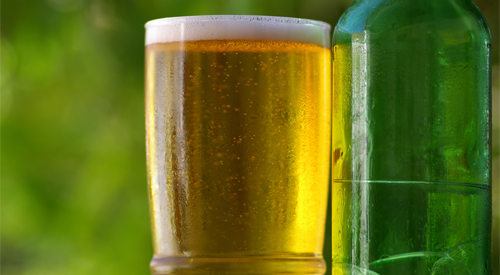
Alcohol Details: Beer is produced from malted grains or grains that have been sprouted and heated. Brewing beer involves converting the grain to sugar. Once this conversion has been done the sugar is then fermented with various forms of yeast and flavorings for the beer. Beer is then preserved with hops. Hops are a flower that is known to have a bitter taste and is used to balance the sweetnees of malt.
Variations of name (ingredients vary): Lager, Stout, Ale, Cider, Beer, Porter, Cooler
Pilsner, Breezer
Alcohol percentage: 2.0% to 16%
Ingredient variations:
[one_third]
- Rye: Rye Beer
- Wheat: Wheat Beer
- Barley: Beer, Ale
- Corn: Corn Beer
- Rice: Rice Beer
- Millet: Millet Beer
[one_third]
- Apples: Cider
- Malt and fuit: Fruit malt beverages
- Ginger and raisins: Ginger Beer
- Pears: Pear Cider
[one_third_last]
- Ginger: Ginger Beer
- Potatoes: Potato Beer
Popular beer brands:
Wines and Champagne
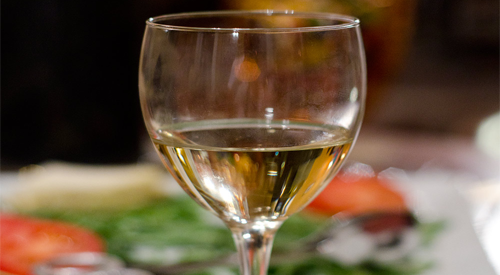
Alcohol Details: Wine is produced the process of taking fruits such as grapes and placing them into a large vat to be crushed. Yeast is then added to begin the fermentation process of wine. The added yeast interacts with sugar from the fruit that was crushed in the vat. The yeast fermentation process creates the alcohol. After the fermentation process, the solid pieces left over are removed and the remaining fermented batch is aged in wooden casks.
Name Variations (ingredients vary): White wine(riesling, gewurztraminer,chardonnay,sauvignon blanc), Red wine(zifandel, syrah, merlot, cabernet sauvignon, pinot noir), Rose Wine, Champagne, Sparkling Wine, Vermouth, Port Wine, Fortified Wine
Alcohol percentage: 7% to 24%
Ingredient variations:
- Grapes: Red Wine, White Wine, Champagne
- Ginger and raisins: Ginger Wine
- Plum: Plum Wine
- Pomace: pomace Wine
- Sake
Popular Wine Brands:
Distilled Spirits
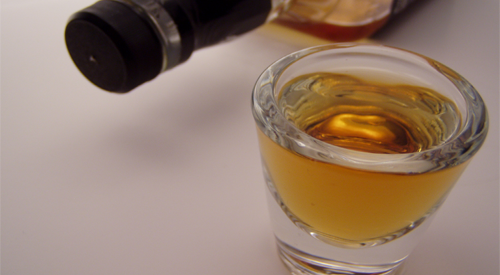
Alcohol Details: Alcoholic spirits are put through a distillation process that involves the spirit being distilled from fermented grains, fruits, or Vegtables. Sometimes alcohol spirits are malted, distilled, aged or distilled, filtered and aged. Aging is not done everytime on every alcoholic spirit
Alcohol percentage: 25% to 85%
[one_half]
Vodka

Alcohol: Clear in form, distilled to be fresh and clean tasting and clear looking. Vodka can also contain added flavors. Major consumers of vodka are in the Russian area of Euro-Asia.
Types of vodka:
Ingredient Variations:
Popular Vodka Brands:
Top 10 Vodka List
[/one_half]
[one_half_last]
Tequila

Alcohol: Brown (Gold) or clear (silver, white, Blanco) in color. Distilled from fermented juice from the agave plant. Tequila originates from one specific location in Mexico.
Types of Tequila:
Ingredient Variations:
Popular Tequila Brands:
Top 10 Tequila List
[/one_half_last]
[one_half]
Rum

Alcohol: Clear or dark in form, distilled from molassesor sugar cane. Rum can also contain added flavors. Major rum distillers are located mostly in the Caribbean.
Types of Rum:
Ingredient Variations:
Popular Rum Brands:
Top 10 Rum List
[/one_half]
[one_half_last]
Whiskey

Alcohol: Brown or dark in color and distilled from mash, corn, or potatoes. Whiskey is primarily Distilled in the USA, and Scotland. Other countries like Japan and Australia are known to produce whiskey too.
Types of Whiskey:
Ingredient Variations:
Popular Whiskey Brands:
Top 10 Whiskey List
[/one_half_last]
[one_half]
Gin

Alcohol: Colorless in nature. Gin is created from already distilled alcohol and then flavored with Juniper berries and other various herbs
Types of Gin:
Popular Gin Brands:
[one_half_last]
Brandy

Alcohol: Distilled from the wine of fermented juice (Yeast added in). Brandy is very Prominent in France
Types of Brandy:
Popular Brandy Brands:
[one_half]
Absinthe

Alcohol: Green in nature and very strong in alcohol percent, and flavored from anise and wormwood. Absinthe is also known by the knickname the green fairy. Absinthe is distilled from wormwood and various herbs. It sometimes contains Thujone which is falsely reported to be a hallucinogenic. Absinthe has a reputation to be taboo and also known for being a mysterious drink. Absinthe is usually consumed mixed with three to five parts water mixed.
Types of Absinthe:
Popular Absinthe Brands:
Top 10 Absinthe list
[/one_half]
[one_half_last]
Ouzo/Sambuca//Pastis/Raki

Alcohol: Ouzo is distilled from Pomace. Ouzo is known to be very prominent in Greece, Italy, Turkey, and France. Ouzo is also known to Sometimes contain opium.
Popular Brands:
Other types of Distilled Alcohol
[one_half]
Grain
[/one_half] [one_half_last]
Fruits
[/one_half_last]
[one_half]
Vegetables
[/one_half] [one_half_last]
Other
[/one_half_last]
Liqueurs or Cordials
Alcohol Details: Liqueurs and Cordials are flavored alcohol that have aquired this flavor from being infused with flavors from various fruits, flowers, herbs, woods, chocolates, etc. After the liqueur flavoring process sugar is then added to the liqueur. Cream is also known to be added to alcohol liqueurs too..
Alcohol percentage: 13% to 55%
Ingredient variations:
Popular Brands:
Discuss! #alcohol
The Difference between Clear Liquor & Dark Liquor
Clear Liquor & Dark Liquor Facts and Myths
MYTH: Clear Liquor is Cheap liquor
Truth: This can ring true sometimes since clear liquor is alcohol in it’s normal state upon distillation and hasn’t been aged, etc. Just because a liquor is clear though doesn’t mean it’s cheap. You must learn to choose your liquors wisely.
MYTH: Switching between the two liquors (clear & dark) will make you more intoxicated faster.
Truth: Alcohol is alcohol regardless of color unless the percentage of alcohol in the liquor is different. If the percentage is the same then both liquors will cause intoxication at the same rate. This rate is called absorbtion and is dictated by various factors.
MYTH: Clear Liquor will get you drunk faster than Dark Liquor
Truth: Alcohol is simply alcohol. What dictates the level of intoxication from alcohol in a person is the absorbtion rate of that person. Absorbtion factors include body weight, amount of alcohol, metabolism, gender, etc.

